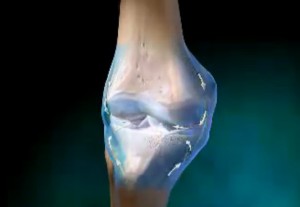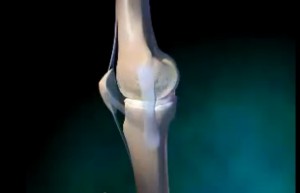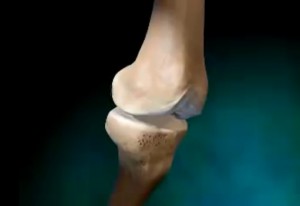What causes rheumatoid arthritis? It is actually the most common disease associated with old age. Rheumatoid Arthritis symptoms typically are characterized by joint pains, inflammation and abrupt episodes. Of the individuals with this condition, about 5% become relentlessly affected and significantly disabled. Hence, you should never delay consulting your physician upon experiencing painful and swollen joints. But you might wonder- what is rheumatoid arthritis and how did it come to be?
Causes of Rheumatoid Arthritis
Rheumatoid arthritis or RA refers to chronic autoimmune inflammatory disease that affects the joints in your feet and hands as well as the other parts of the body like the linings in your lungs and heart. The body has a natural defense, the immune system, which naturally uses the antibodies to defend you against infection and disease. In an autoimmune disorder like RA, these antibodies assault the joints, resulting to inflammation and pain. The reason for this attack remains unclear and it was thought that an infection causes this antibodies fault attack or RA already runs in the family. Besides, studies show that women are more affected by this autoimmune disorder than men.
Rheumatoid arthritis Symptoms
The disorder often starts out slowly in which signs and symptoms are quite common to most of other illnesses. These often include fatigue and diminished appetite; bodily weakness, swollen glands and low fever. Over time, however, joint pain is already felt. Morning stiffness is often felt that lasts up to 1 hour, while the joints becomes tender, stiff and warm when idle even for an hour. This is normally felt especially after getting out of bed. Affected areas often include fingers and wrists; shoulders and elbows; neck and jaw; hips and knees as well as toes and ankles. These joints oftentimes have become inflamed and feel spongy and boggy and eventually lose their motion range and even become deformed. Other symptoms may also appear, such as chest pain when breathing, itching, eye burning and discharge; hard bumps or nodules underneath the skin which is an indication of more acute disease; tingling, burning or numbness on both feet and hands. Joint obliteration may happen at the span of 1 to 2 years after rheumatoid arthritis appears.
Diagnosis
There is a specific type of blood test available to diagnose rheumatoid arthritis, thus, setting it apart from different kinds of arthritis. This particular blood test is known as anti-CCP antibody test. Aside from anti-CCP antibody test, other diagnostic tests may also be done which include C-reactive protein and complete blood count; MTS or joint ultrasound and Erythrocyte sedimentation rate; Synovial fluid analysis and joint x-ray examination. More so, a rheumatoid factor test is also used to diagnose RA disorder of which around 75% who show symptoms are confirmed to have RA. Once RA is confirmed and medications are initiated, urine and blood test must be regularly undertaken to find out the effectiveness of the medications as well as figure out if the medicines are causing side effects to the patients.
Pictures of Rheumatoid Arthritis
Check out these pictures where you see how bone development deteriorates following this disease
Rheumatoid arthritis Treatment
Rheumatoid arthritis normally requires a lifetime treatment which primarily involves taking medicines, exercise, physical therapy, education and even surgery. Prompt treatment of RA effectively delays the destruction of joints. Here’s what RA treatment method involves.
- Medication – this primarily involves taking prescribed medicines including DMARDs like Methotrexate or Leflunomide; anti-inflammatory drugs like NSAIDs, aspirin and Celecoxib; anti-malarial drugs like sulfasalazine and hydroxychloroquine as well as corticosteroids, which reduces inflammation and swelling of joints. Prolonged and improper administration of these medications are crucial that is why it best to talk with your doctor if you have any inhibitions about the side effects of these drugs.
- Biologic Agents – these drugs affect the parts of your body’s immune system which is responsible for the development of rheumatoid arthritis. These are considered when initial medications are ineffective. More often than not, doctors initiate biologic medicines sooner together with other RA medication drugs. Besides, administration of biologic agents can be done in two ways, intravenously or directly into the vein or subcutaneously or underneath the skin. However, when this treatment method is used, close monitoring is required because of the possible risk factors like psoriasis, leukemia and infections.
- Surgery – it is rarely needed to fix relentlessly affected joints which can alleviate joint pain as well as deformities. The initial surgical treatment could be synovectomy, referring to joint lining removal while to some case; entire joint replacement is highly needed.
- Physical Therapy – this involves enrolling in an exercise program recommended by physical therapist which can delay total loss of the function of your joints. Aside from joint exercises, you will also be taught about joint protection methods as well as cold and heat joint treatments.
Prognosis
RA progression differs with every individual. For some, the disorder has become less aggressive and improvement on symptoms is noticed. Other patients, however, develops a more serious type of disease. Oftentimes, those who obtain rheumatoid factor or subcutaneous hard bumps tend to develop the severe type of disease. The same holds true for those who had RA at a younger age which tend to worsen more quickly. Improvement is seen once treatment is initiated and some even get to hold a full-time job. However, 10% of RA sufferers are extremely disabled and even incapacitated to do typical day-to-day tasks.
Complications
RA does not just affect the joints but affects nearly all organs in the body. Some complications include anemia, lung tissue damage and spinal cord injury; rheumatoid vasculitis, which may result to infections, nerve problems and skin ulcers. Besides, vasculitis itself affects the heart, nerves and brain and may even result to heart failure. Moreover, RA treatment can also cause side effects, thus, you have to tell your doctor once you experience the symptoms.
Living with Rheumatoid Arthritis
RA is a lifelong disease and prompt treatment is highly needed. However, a lifestyle change will effectively help in living with the disease especially when you are obese; meaning you have to eat healthy and lose weight. Besides, regular exercise strengthens the muscles surrounding the joints and helps relieve fatigue. In addition, walking and gentle aerobics are excellent exercises to indulge in.
Therefore, with proper treatments and healthy lifestyle, you can still enjoy life even if you have rheumatoid arthritis.
Rheumatoid Arthritis Video
Check out this video that show how this bone disease develops and how bones can get affected if we do not take proper care.


